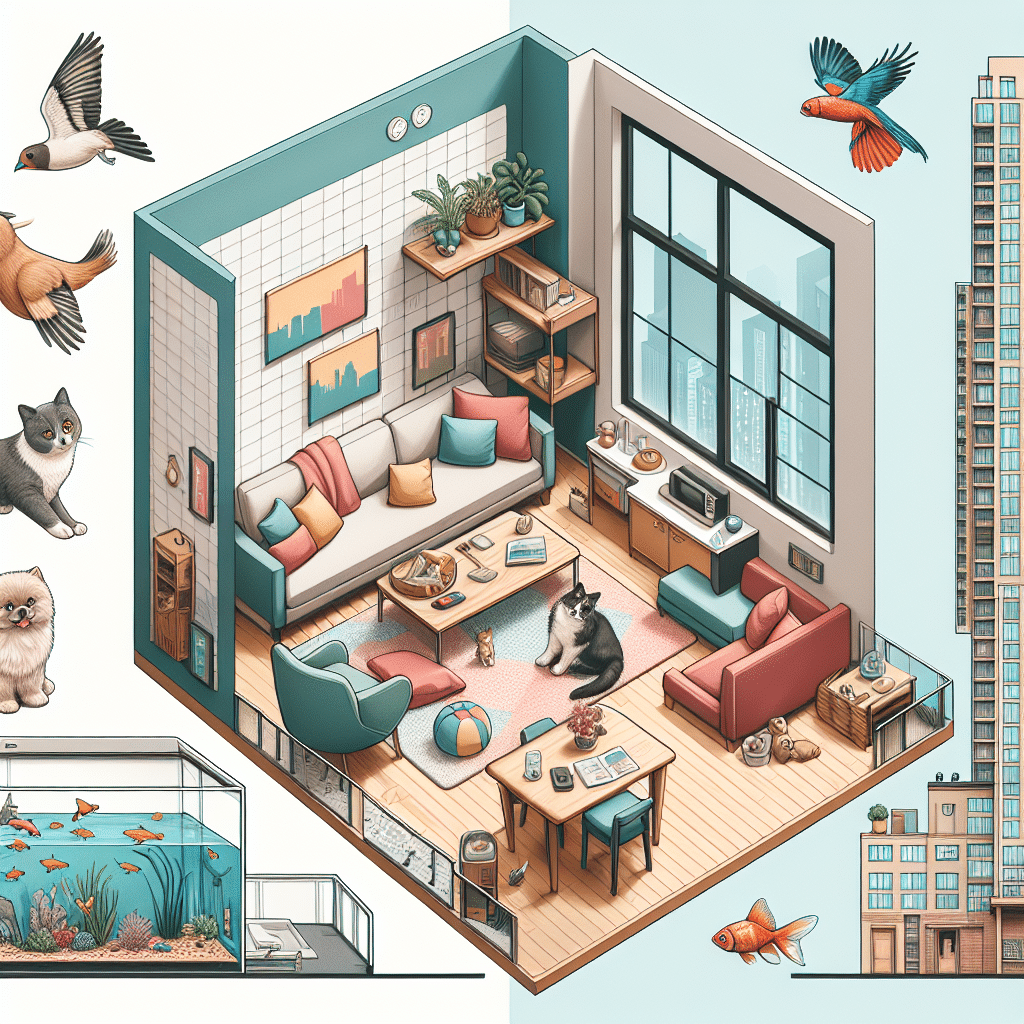Choosing the Right Pet for Your Apartment Lifestyle
Understanding Your Living Space
Apartments often come with limitations that affect pet ownership, including size, noise restrictions, and limited outdoor space. It’s crucial to evaluate your apartment’s layout, square footage, and proximity to parks. A studio apartment might be suitable for smaller pets, while families with larger spaces may consider medium-sized dogs.
Pet Size and Space Requirements
-
Small Dogs:
- Breeds like the French Bulldog, Dachshund, and Pug flourish in limited spaces.
- They require less space to roam and can adapt to smaller living areas, provided they have daily walks.
-
Cats:
- Cats are generally adaptable to apartment living. Breeds such as the British Shorthair or Ragdoll thrive without needing extensive outdoor space.
- Cats require vertical space, so cat trees or shelves can enhance their living environment.
-
Small Mammals:
- Guinea pigs, hamsters, and rabbits can live comfortably in cages, making them ideal for smaller spaces.
- Ensure the habitat is spacious enough with enrichment to prevent boredom.
-
Fish:
- An aquarium can fit nicely in an apartment, offering a beautiful visual element without taking up too much space.
- Ensure the size of the tank is suitable for the fish species you choose, ranging from bettas to goldfish.
Assessing Your Lifestyle
-
Activity Level:
- If you lead a busy lifestyle with little time for exercise, consider pets that require less physical activity.
- Breeds such as the Bulldog or Basset Hound are known for being more laid-back compared to high-energy dogs like Border Collies.
-
Time Commitment:
- Pets like reptiles (e.g., geckos or snakes) or fish generally require less daily interaction than dogs or cats.
- Ensure you can provide sufficient care without compromising your schedule.
-
Allergies and Health Considerations:
- Consider hypoallergenic pets if you or anyone in your household has allergies.
- Breeds such as Poodles or Schnauzers are known to produce fewer allergens.
Noise Considerations
-
Quiet Pets:
- In an apartment setting, noise levels can be a significant concern, particularly if neighbors are nearby.
- Opt for quieter pet breeds; for instance, the Shih Tzu is known for its calm demeanor.
-
Training and Socialization:
- Properly training your dog can reduce barking. Consider breeds that are naturally quieter.
- Early socialization helps keep your pet calm and composed, reducing noise levels due to anxiety or boredom.
Pet-Friendly Amenities
-
On-Site Amenities:
- Look for apartments with pet parks or walking areas. These spaces can provide an outlet for energy, especially for dogs.
- Some apartments offer dog-washing stations, which add convenience.
-
Pet Policy:
- Always review your lease for restrictions regarding pet ownership, including size limits, breed restrictions, and pet fees.
- Consider apartments that are known to be pet-friendly to ease any concerns.
Social Needs
-
Companionship:
- Pets like dogs need social interaction and companionship, making them better suited for those who spend considerable time at home.
- Cats, while self-sufficient, also benefit from interaction and playtime.
-
Multiple Pets:
- If you’re considering multiple pets, ensure your apartment can accommodate them comfortably.
- Assess factors like multiple litter boxes for cats or sufficient space for two small dogs to interact without conflict.
Cost of Pet Ownership
-
Consider Expenses:
- Budgeting for food, grooming, and veterinary care is essential. Certain breeds may require specialized diets or medical care.
- Factor in pet insurance, which can offset costs related to health emergencies or routine veterinary visits.
-
Supplies:
- Purchase appropriate-sized supplies, including beds, food and water dishes, and toys when choosing your pet.
- Research on the best products that fit your pet’s needs and your apartment space.
Pet Vacations and Travel
-
Traveling with Pets:
- If you travel often, consider the hassle of pet care. Some pets transition well to boarding, while others might struggle.
- Look for pets that have adaptable temperaments for travel, such as small breeds that can easily fit in a carrier.
-
Pet Daycares and Walkers:
- Research local dog daycare facilities for busy days. This can relieve anxiety for both you and your pet when you’re away.
- Hiring a dog walker can be ideal for larger, more energetic dogs that require regular exercise.
Choosing the Right Breed or Species
-
Research Breeds:
- Explore breed characteristics thoroughly to find one that matches your lifestyle.
- Read about temperament, exercise levels, and grooming needs specific to each breed.
-
Adoption and Rescue:
- Consider adopting from shelters and rescue organizations. Many mixed breeds adapt wonderfully to apartment living.
- These organizations can provide insight into each animal’s behavior and physical needs.
Preparing for Your New Pet
-
Setting Up Your Apartment:
- Create a pet-friendly zone in your apartment, ensuring it is safe and equipped with necessary supplies.
- Use indoor play options to engage your pet, from interactive toys to scratching posts.
-
Establish a Routine:
- Set a structured routine for feeding, walks, and playtime to help your pet adjust to their new environment.
- Consistency can ease the transition for both you and your new companion.
Conclusion
Incorporating a pet into an apartment lifestyle can be greatly rewarding with the right choice. By evaluating space, lifestyle needs, social interaction, and costs, you can make an informed decision that enhances your living experience. Whether you opt for a small dog, a cat, or a more unique pet, understanding your own circumstances will lead to a harmonious relationship between you and your new furry friend.
